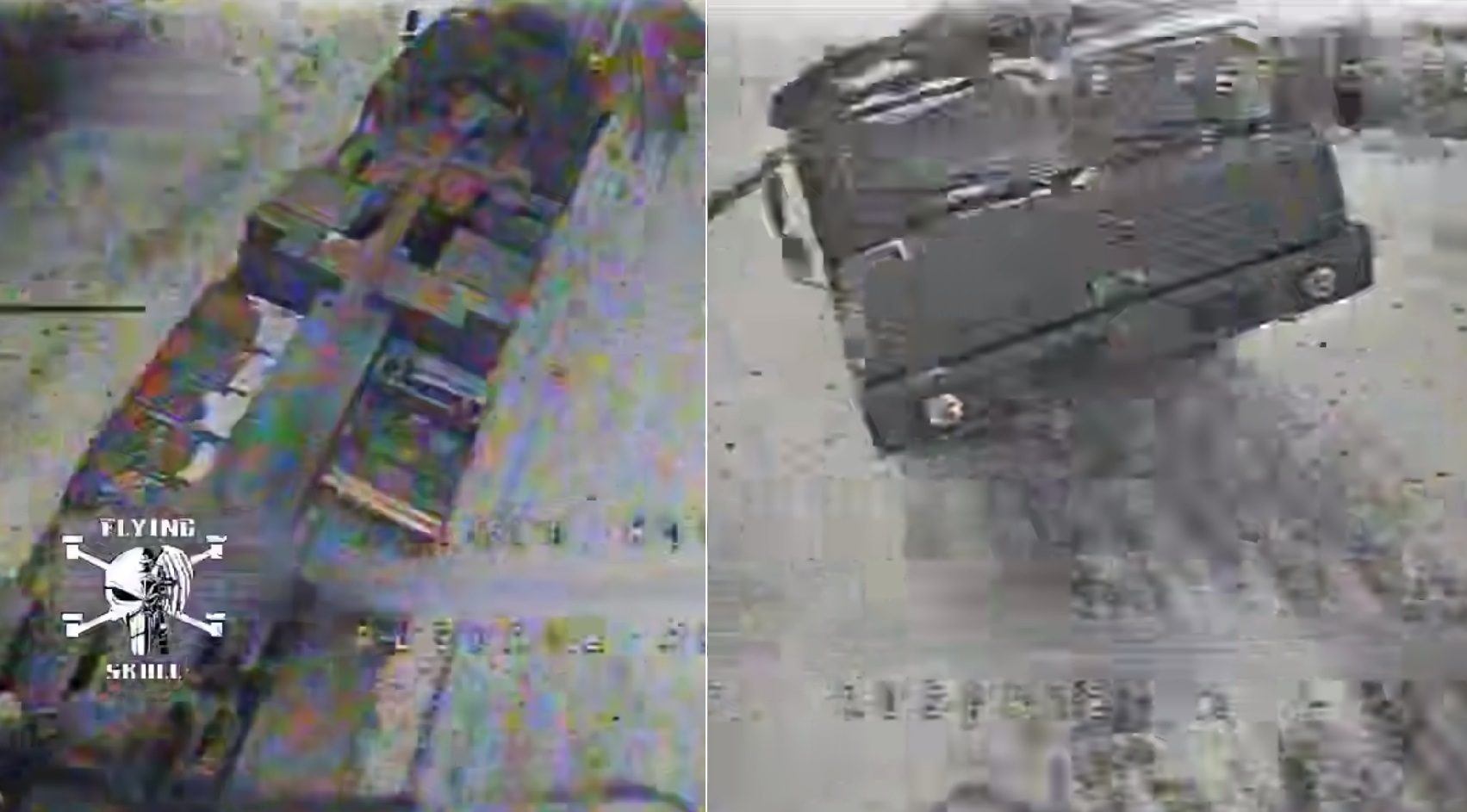
The Flying Skull attack drone unit struck a rare Russian 2S43 Malva wheeled howitzer with two FPV copters.
Footage of the attacks was shared by blogger Serhiy Sternenko.
The operators of the Flying Skull Unmanned Systems Force intercepted a 152-mm Malva artillery system while changing positions somewhere in the Kursk oblast.
The first attack FPV drone hit the cockpit with the crew, but the vehicle continued to move. The second drone hit the artillery part of the system in the area of the ammunition containers and the cannon.
However, despite the two hits, the vehicle did not appear to be destroyed and was able to leave the section of the road that was being fired upon by Ukrainian operators.
The 2S43 Malva is a new and rather rare artillery system that began to enter service with the enemy army only at the end of last year.
However, it was first spotted in the combat zone only in June, when it was captured by a long-range reconnaissance drone in the Belgorod oblast. At that time, the Defense Forces failed to hit it.
The author of the photo reported that the vehicle belonged to the 9th Artillery Brigade of the Russian Armed Forces.

The Central Research Institute “Burevestnik” began developing 2S43 Malva in the 2010s as part of the “Nabrosok” research and development work. Its testing began in 2020.
The system is armed with a 152-mm rifled 2A64 gun with a barrel length of 47 caliber, which is also used in the design of the Msta-S self-propelled howitzers and its trailer version, the Msta-B.
By maintaining the same barrel length as the aforementioned systems, the range of the Malva remains at the level of old Soviet artillery systems: 24.7 km with conventional high-explosive munitions and 29 km with active-reactive shells.

The howitzer’s open mounting without additional armor protection or turret made the vehicle lighter. With a 30-round ammunition package, it weighs 32 tons. This is a quarter lighter than the tracked Msta-S.
The self-propelled gun is built on the chassis of the BAZ-6010-027 truck, which reduces the cost and speeds up its production.
Experience with the 2S43 has revealed a low level of automation. The vehicle has a primitive fire control system and requires manual feeding of ammunition for firing.
According to the Russian military, the machine has significantly limited horizontal guidance angles. It also requires flat ground at the firing position because the platform cannot be leveled independently.
Підтримати нас можна через:
Приват: 5169 3351 0164 7408
PayPal - paypal@mil.in.ua
Стати нашим патроном за лінком ⬇
Subscribe to our newsletter
or on ours Telegram
Thank you!!
You are subscribed to our newsletter